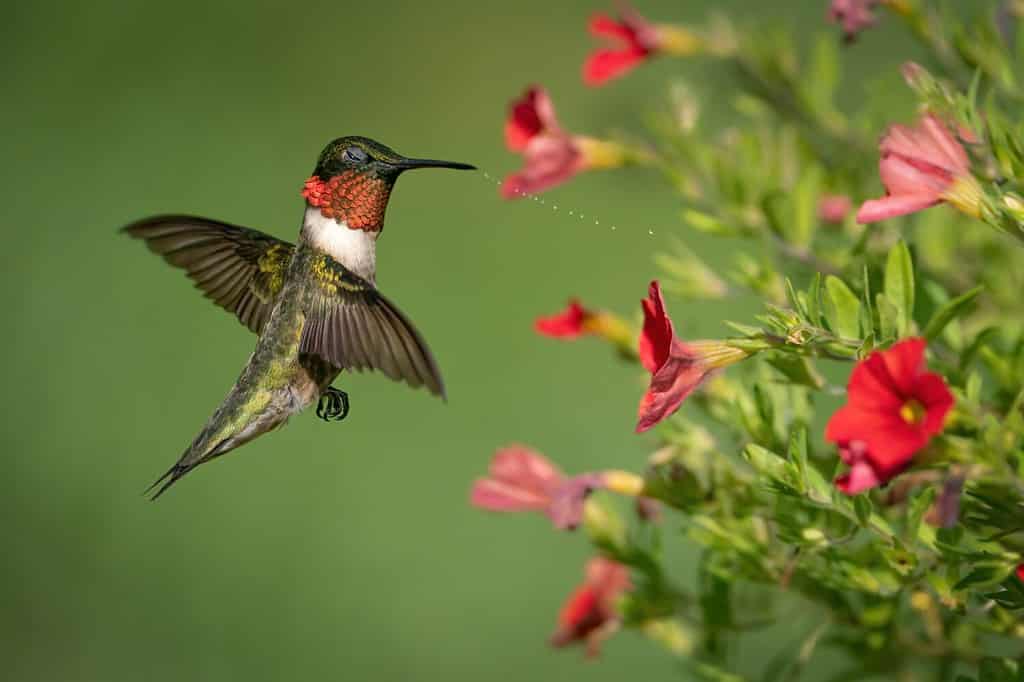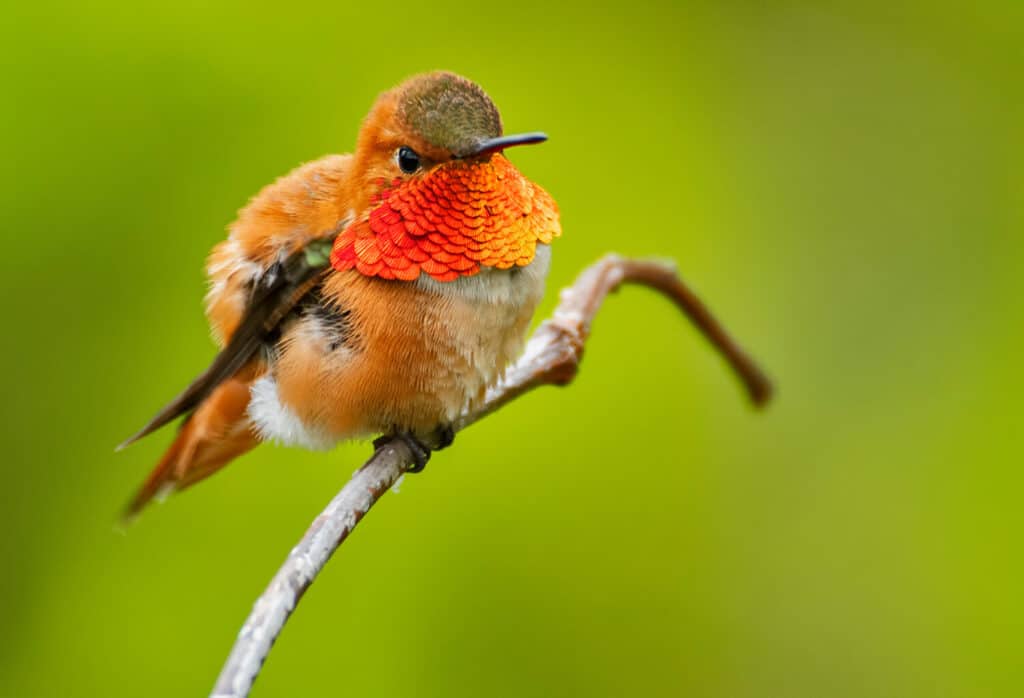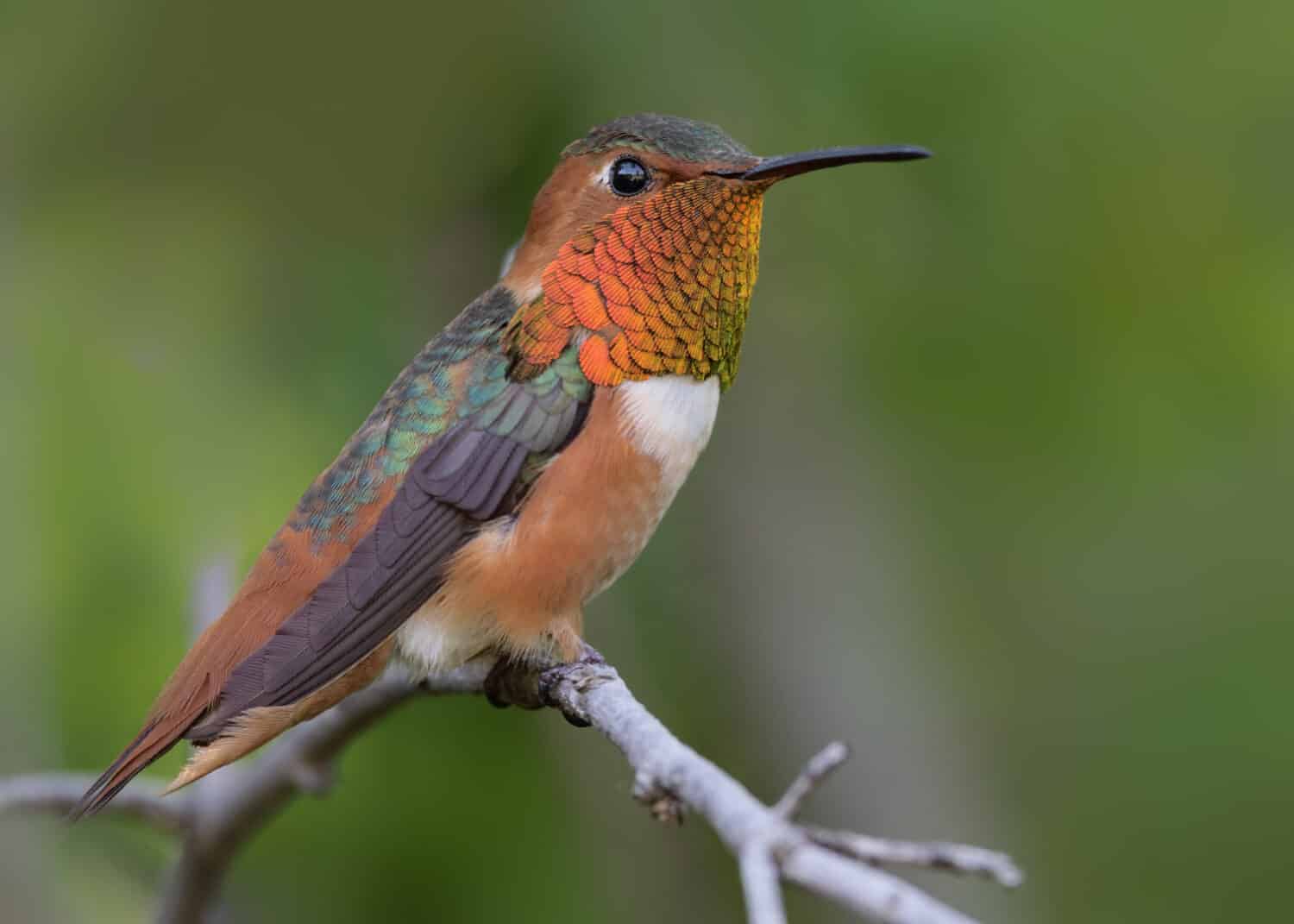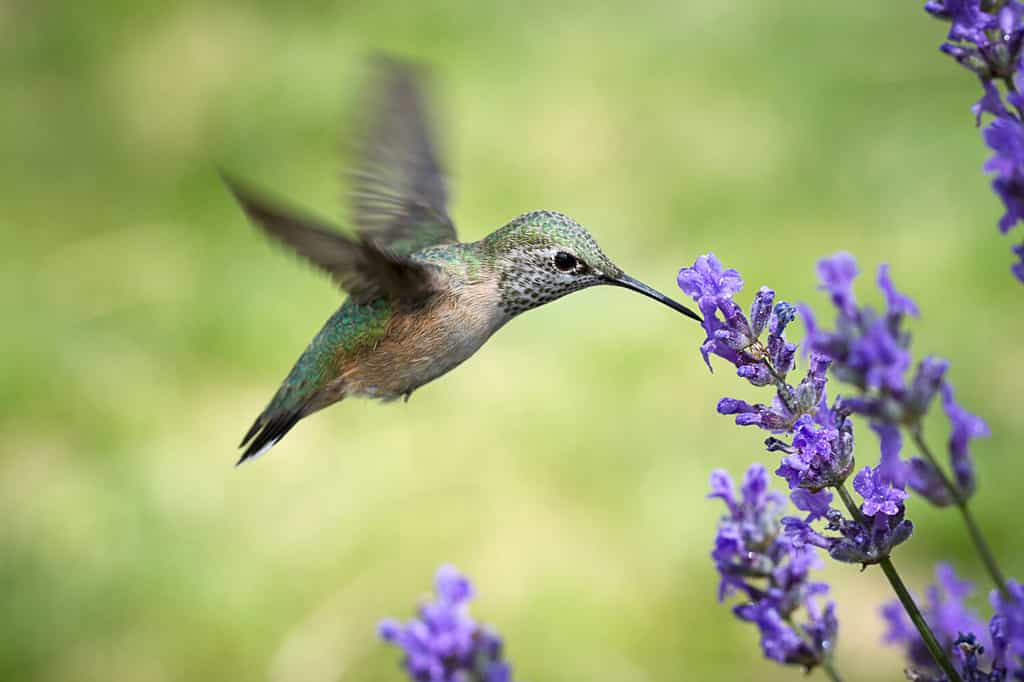While there isn’t a specific date each year for hummingbirds to leave Virginia, they do migrate around the same time every year. These birds rely on their instincts, which tell them when it’s time to head south. Adult male hummingbirds are generally the first to arrive in Virginia in mid-April, as the weather is heating up. Juveniles and females usually arrive several weeks later, early in May. Ruby-throated hummingbirds are the most common species in Virginia and the only species that breed in the state. Females nest on tops of deciduous trees in the woods, like hornbeams, poplars, and oaks. But when are hummingbirds set to flee Virginia? And where do they go?
When Do Hummingbirds Flee Virginia?
As summer draws to a close, hummingbirds will start to flee Virginia, migrating south. There are no species of hummingbirds that live in the Old Dominion year-round, with males leaving first in late August. Females and juveniles follow at a later stage, and the migration is typically over by mid-November. The reason for this elongated migration is to ensure that late migrants have enough resources available for energy to complete the taxing migration before winter arrives. However, female ruby-throated hummingbirds have another reason to stay in Virginia a bit longer. They must remain with their hatchlings until they are strong enough to migrate.
Some Virginian residents might see a few hummingbirds during the winter, but sightings are rare because only the old or injured stay behind as they are not strong enough to migrate. These birds know when to migrate thanks to an internal clock. The clock is triggered by temperature, changes in weather, decreased amount of sunlight, and the decline of food supply.

There are no species of hummingbirds that live in Virginia year-round, with males leaving first in late August. Females and juveniles follow at a later stage, and the migration is typically over by mid-November.
©Cavan-Images/Shutterstock.com
Where Do Hummingbirds Go When They Flee Virgina and How Long Does It Take?
Hummingbirds fleeing Virginia at the end of summer can migrate to several destinations. Firstly to reach the most distant Mexican border, approximately 1,600 miles away, a hummingbird has to fly 53 hours at an average speed of 30 mph. However, they can also migrate to Panama, over 107 hours away, covering 3,200 miles. Furthermore, they can choose to fly across the Gulf of Mexico to Panama, which takes 67 hours, covering 2,000 miles. Not all hummingbirds fly continuously for hours. Some only fly for an hour a day. But others try to make the trip as fast as possible and can fly for 20 hours daily, covering 500 miles non-stop.
These amazing birds do not migrate in flocks like other bird species. They migrate on their own when several factors trigger their internal clock. This type of migration is essential in ensuring there is enough food and water for all individuals during the migration so resources are not depleted simultaneously. To prepare for migration, hummingbirds in Virginia gain 25 to 50% of their body weight by eating larger quantities of nectar from flowering plants and feeders. Furthermore, they catch more insects in mid-air for protein. They need to increase their body fat to help fuel them for their taxing migration. As a result, Virginian residents see an increased volume of southern migrating hummingbirds enjoying their feeders during the fall from September to October. Interestingly, these hummingbirds remember the feeders they visited in the spring and will return to the exact spot in fall on their way south.
What Hummingbird Species Occur in Virginia?
While there are no resident species of hummingbird in Virginia, several species are recognized in the state bird records. Hummingbirds in the state are grouped into different categories, seasonal and rare/accidental.
Virginia’s Seasonal Hummingbirds
While the ruby-throated hummingbirds are the most well-known species throughout the state, Rufous hummingbirds are also common in Virginia and classified as a seasonal species.

Rufous hummingbirds are fiercely territorial. Even on short stops while migrating, they’re prone to chase off other hummingbirds at feeders.
©punkbirdr/Shutterstock.com
Virginia’s Rare or Accidental Hummingbirds
There are no rare species of hummingbirds in Virginia. However, many accidental species visit the state, including:
Black-Chinned Hummingbirds
The black-chinned hummingbird has a straight bill and a slender body. They are rather a non-descript species. Males are identified by their purple throats that appear black, with whitish-gray underparts and a white spot behind the eye. They also have a dull metallic green color on their flanks. However, females look different; they have a whitish throat and light metallic green on their backs, with whitish underparts. While their sides are also green, it is much lighter than the males’ metallic green.
These hummingbirds are thriving, with an estimated population size of 8.8 million breeding birds and counting. The boom in numbers might be due to the growing popularity of bird feeders and flower gardens. However, just like many animals, they are experiencing habitat loss, especially stream habitats in dry regions.
These birds are migratory. They inhabit western North America during their mating season and migrate to Mexico, flying along the Gulf Coast during winter. Black-chinned hummingbirds occur along rivers. They especially like rivers in canyons. However, in dry environments, people report sightings near sycamore, willow, salt-cedar, cottonwood, sugarberry, and oak trees. While they are rare in Virginia, sightings occur around Northampton, Williamsburg, Lynchburg, Newbern, Kiptopeke, Cape Charles, and Chesapeake.

The black-chinned hummingbird has a straight bill and a slender body. They are rather a non-descript species. Males are identified by their purple throats that appear black, with whitish-gray underparts and a white spot behind the eye.
©rck_953/Shutterstock.com
Allen’s Hummingbirds
The Allen’s hummingbird is a small but stocky bird with a straight bill. Males have metallic bronze-green backs, vibrant reddish-orange throats, copper bellies, and tails. However, females have dull metallic bronze-green backs, with a small reddish-orange patch on their throats. Additionally, they have copper-colored flanks.
These birds are relatively common. However, their global population has decreased significantly. For example, since 1968, their population has declined by around 80%! Currently, their total breeding population comprises approximately 1.5 million individuals. Unfortunately, if their numbers keep decreasing, the Allen’s hummingbird will go extinct. Conservation measures are needed to help these birds stabilize their population. But, if nothing is done, their numbers will halve in 17 years’ time. Their demise is due to several reasons, like development destroying their coastal breeding sites, and they struggle to adapt to urban settings. However, people can help these birds by planting eucalyptus and installing hummingbird feeders providing nectar.
Allen’s hummingbirds prefer breeding in forest, chaparral, and coastal scrub on the west coast of the southern U.S. from southern California to southern Oregon. While most of the population heads south to Mexico for the winter, some migrate east to Virginia. They like to inhabit oak-pine forests, close to clearings with a wealth of flowers and scrub.

Males have metallic bronze-green backs, vibrant reddish-orange throats, copper bellies, and tails. However, females have dull metallic bronze-green backs, with a small reddish-orange patch on their throats.
Image: Angel DiBilio, Shutterstock
©Angel DiBilio/Shutterstock.com
Calliope Hummingbirds
The Calliope hummingbird breeds in the mountainous areas of the northwestern United States and southwestern Canada. However, they are a fully migratory species that winters in Mexico. During their winter migration, they may inhabit thorn forests, subalpine and mountain meadows, pine-oak forests, and brushy edges. While they are rare in Virginia, sightings occur in Washington, Lynchburg, Charlottesville, and Nokesville during colder months.

The Calliope hummingbird breeds in the mountainous areas of the northwestern United States and southwestern Canada. However, they are a fully migratory species that winters in Mexico.
©Gregory Johnston/Shutterstock.com
The photo featured at the top of this post is © Ramona Edwards/Shutterstock.com
Thank you for reading! Have some feedback for us? Contact the AZ Animals editorial team.






